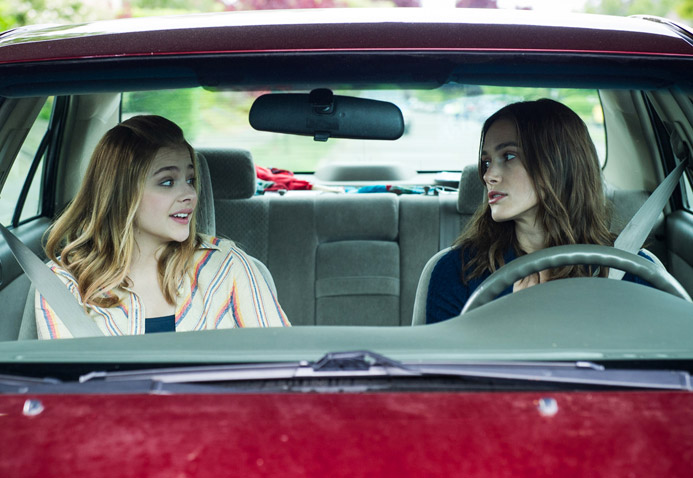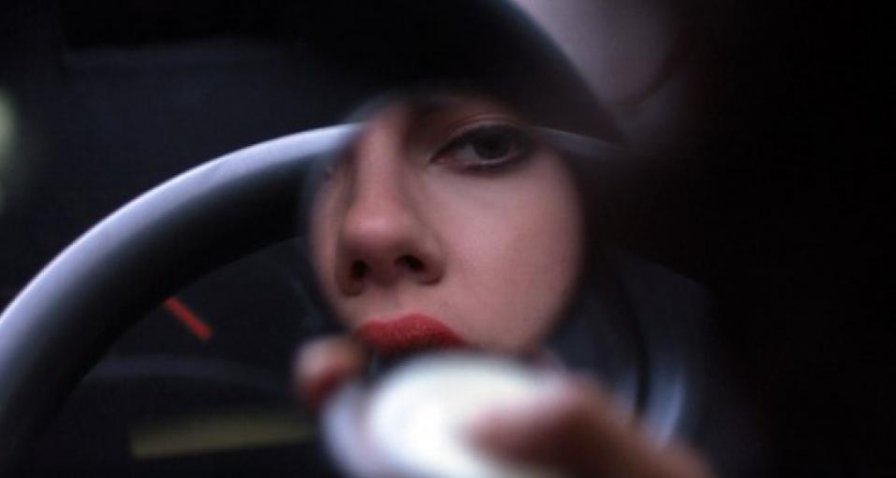We celebrate the end of the year the only way we know how: through lists, essays, and mixes. Join us as we explore the music and films that helped define the year. More from this series
This is where Drafthouse Alliance comes in. It’s a membership program that delivers a boatload of goodies, like “limited-edition film swag,” invitations to special events at the Alamo Drafthouse theaters, and digital copies of the distributor’s next 10 releases — even DVD copies if you spring for the more expensive membership (of the two available). In this way, Drafthouse skips the dealer and delivers its potent dose of cinema directly to an audience already addicted to the drug that is independent film. But the genius of this system — aside from obtaining a veritable treasure trove of marketing data about where its fans reside — is that it creates a guaranteed post-theatrical audience. Sure I can get The Act of Killing on DVD from Amazon months after its release or even pick it up in a store. But we live (for better or for worse) in the age of instant gratification, an age where everything is a click away. Even without being a member of the Drafthouse Alliance, I can buy a digital copy of the film direct from the source, bypassing all the middlemen.
This built-in audience is not only attractive to consumers, but also a boon to filmmakers. Any films that Drafthouse picks up will, at the very least, have a theatrical run on the Alamo Drafthouse screens and then be immediately piped into living rooms around the country. This, especially for independent film, is a powerful thing. Think about a film like Katrin Gebbe’s Nothing Bad Can Happen. The German director’s debut film follows Tore — a member of the Christian punk movement — as his life spirals into darkness at the hands of a dysfunctional family. It’s intense, violent, and a very good film. But few theaters outside of the Alamo franchise screened it. For a film like this to have a built-in audience, to know that more people than perhaps ever before in the so-called digital age will be able familiarize themselves with Gebbe’s work and experience a film that calls into question fundamental ideas about human nature and the institutions we built around ourselves, is pretty incredible. Not everyone can go the Shane Carruth (Primer, Upstream Color) route of self-distribution, so having a company that understands and that can actually reach an audience receptive to their film is especially appealing to filmmakers.
Related is the collectability factor. From the playful, colorful, Michel Gondry-directed, Mood Indigo, to the dark and enigmatic Borgman, Drafthouse’s packaging isn’t just “there” to house the DVD; it stands as a work of art in its own right. This is partly why Criterion continues to succeed in a world where our art forms are increasingly dominated by those of the nonmaterial variety. Even though we can stream movies, some people still favor a beautiful Blu-ray, a booklet with historical context, and special features — “actual” special features, not just deleted scenes and a music video — that can’t be found anywhere else, something you can hold in your hand and proudly display. Film stock has never really been collectible to the general public, but by numbering its films and packaging them in a way that calls out how special a single work of cinema really is — that is, by making the films actually feel collectible — Drafthouse is moving beyond being a company that simply catalogs and sells its films as content. Each release screams and yells out to the viewer: This film is incredible, and it deserves to be on your shelf alongside the 32 other equally incredible Drafthouse releases.
A New Era For Curation
 Still from Lynn Shelton’s “Laggies” (A24)
Still from Lynn Shelton’s “Laggies” (A24)
But beyond the savvy marketing, beyond tapping into movie fandom in a way few companies could ever hope to, both A24 and Drafthouse represent a bigger shift in the film landscape, something more substantial in an industry that is now flooded with images. We live in a world where over 100 hours of video is uploaded to YouTube every minute. It’s a moment in history that is both exciting and overwhelming, a moment when a curatorial voice is not only helpful, but also necessary to guide us toward what we consider meaningful and significant in our culture. Sure, algorithms can be handy, making everything in our lives quick, easy, and more efficient. Netflix tells me I want to watch more horror movies because I watched and liked You’re Next last week. But I also want my viewpoint expanded, challenged; I want to see new things. This is just one job of a curator. A human touch feels necessary to capture the elements of the new and the different, that unquantifiable concept of discovery. An algorithm can’t fully explain why a movie is important and how it fits into the broader landscape of a time and a place or why it matters in the historical timeline of cinema, art and storytelling.
The Drafthouse approach to curation primarily uses film festivals. Think of it as multiple layers of curation. The big film festivals — TIFF, Sundance, etc. — are the pools from which Drafthouse pulls its collection, the proving grounds for new cinematic talent to emerge. The programmers at film festivals sort through thousands of submissions to come up what the public ultimately views. A team of people from Drafthouse then pore through the list of over 300 films at a festival like TIFF, assembling a hit list for their army of cinematic assassins looking to capture the best, boldest, and most singular voices that the art form produces every year. The first Drafthouse Films release was 2010’s Four Lions, a hit at Sundance, but one that lingered without a distributor well after the festival until Tim League and team swooped in. Ben Wheatley’s psychedelic trip across a 17th-century battlefield, A Field in England, was picked up after critical acclaim in Toronto. And both of Joshua Oppenheimer’s stellar, gut-wrenching documentaries about the atrocities committed in Indonesia throughout the 1960s — The Act of Killing and The Look of Silence — found homes at Drafthouse following their Toronto debuts. The Drafthouse style of curation also pulls from the past, specifically the cult canon, the primary examples being Wake in Fright (1971), Ms. 45 (1981), and Miami Connection (1987). But this doesn’t dull the impact and relevance of the films. Each holds its own and continues to stand as an example of the possibilities of the cinematic medium, each one being a film that stands apart from countless others — past and present — that try to capture the same essence.
On a slightly different but no less important curatorial path is A24. It is the here and now. It is ripped from the headlines, future headlines, and uses familiar faces. A24 does occasionally use the film festival scene to build its catalog — something like Denis Villeneuve’s Freudian-laced tale Enemy is a perfect example — but it also builds its projects from the ground up, which allows it to produce films that stay true to a formula it’s been perfecting and refining since its first film premiered in early 2013. And that formula is this: ensure the movie has at least one star who has recently made the rounds of pop culture (James Franco, Scarlett Johansson) or, even better, someone who may have been doing great acting in smaller films, but was recently featured as an integral part of the cast in a blockbuster (The Dark Knight’s Tom Hardy, Harry Potter’s Domhnall Gleeson). In other words, build off the media, use the afterglow of bigger budget films, and, most of all, stay in tune with who and what is hot, like by attaching new, up-and-coming directors (Alex Garland, David Michod) or established indie names (Sofia Coppola, Kevin Smith) to the films. Drafthouse reaches across genres and countries to find their movies; A24 focuses primarily on English-language films intended to appeal to a broad US audience. When comparing A24 to Drafthouse, then, A24 may seem like the star-studded MGM of old (whose motto was “more stars than there are in heaven”) instead of a startup production/distribution house. But it is simply a different way and a different approach, and A24 has created a formula that’s working well.
There have always been curatorial aspects of the film industry. The negotiation between art and business causes this to happen naturally. But it has never been more important than at this moment in history. Curators are needed to contend with the sheer volume of stories available to choose from. Traditionally, festival programmers passed films to the distributor, or a company produced and distributed a film as a complete process. And this in turn was passed to exhibitors who decided when and what to show (with various strings attached). While this used to be the end of the road, a fork in the road has appeared. Distributors now have a direct line to audiences through direct downloads via their websites, not to mention Netflix and Hulu. Here, the Drafthouse Alliance becomes a curatorial voice. The savvy marketing by A24 becomes a curatorial voice. And exhibitors still continue to be a driving force of curation, not only to those who are free of the mainstream system — those independent theaters willing and able to show films from new distributors — but also by going directly to the film’s sales agent if it doesn’t find distribution in the US.
Essentially, Drafthouse and A24 are experimenting with the best ways to navigate this new landscape of choice. Last year, A24 made a $40 million VOD deal with DirecTV, while Drafthouse opened up five of its titles — A Band Called Death, Wake in Fright, Pieta, Wrong, and Graceland — to Netflix. So far, both have found critical and financial successes to varying degrees. But what’s more important is that others in the industry are beginning to take notice: the defunct distributor Picturehouse was recently revived and released The Guest, a film that targets a similar audience looking for edgy cinema; and Radius-TWC (the more daring, cooler side of The Weinstein Company) just released Horns and The One I Love, both of which would be right at home in A24’s lineup.
With their fresh approach to curation and innovative ways of connecting with audiences, A24 and Drafthouse have not only made 2014 a landmark year for both, but also revived hopes for the film industry’s future. It’ll be interesting to see what happens in 2015 as more follow suit.
We celebrate the end of the year the only way we know how: through lists, essays, and mixes. Join us as we explore the music and films that helped define the year. More from this series
